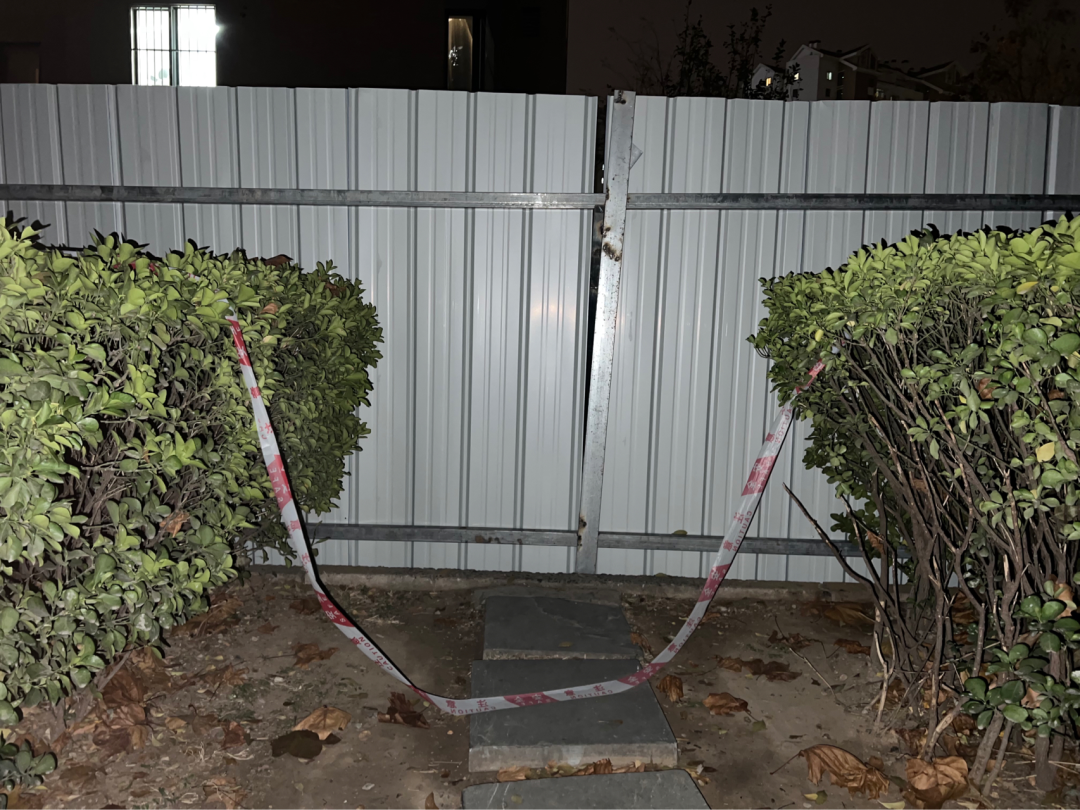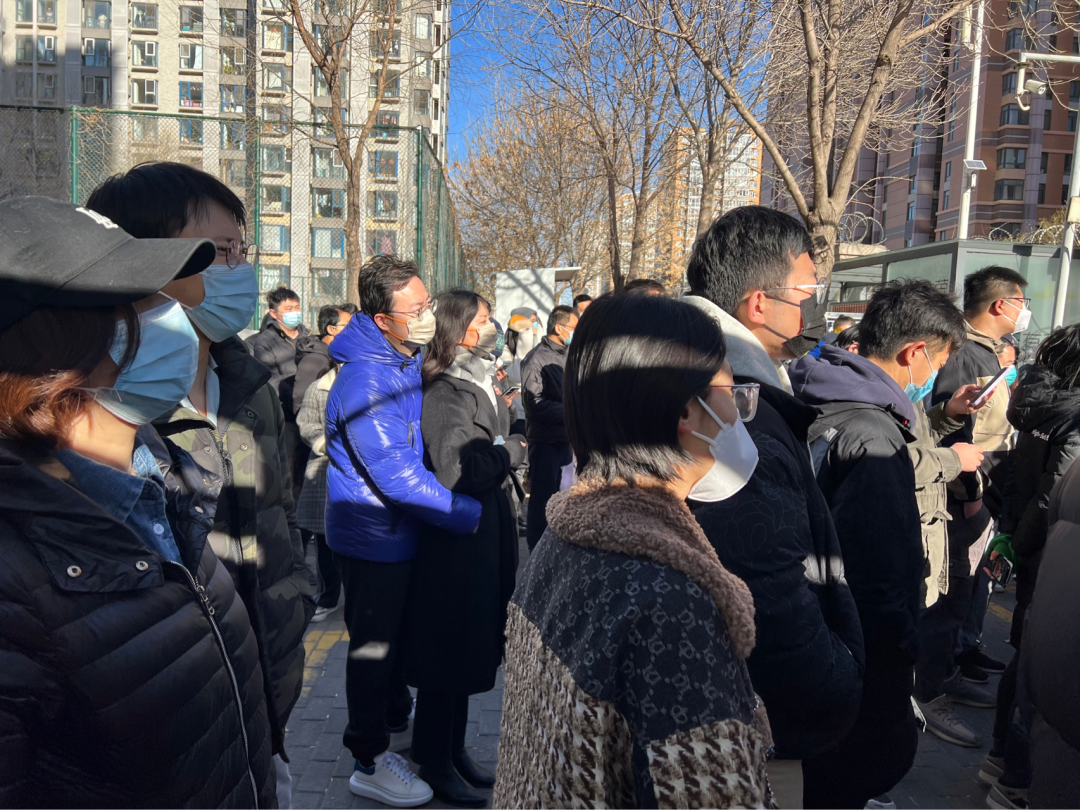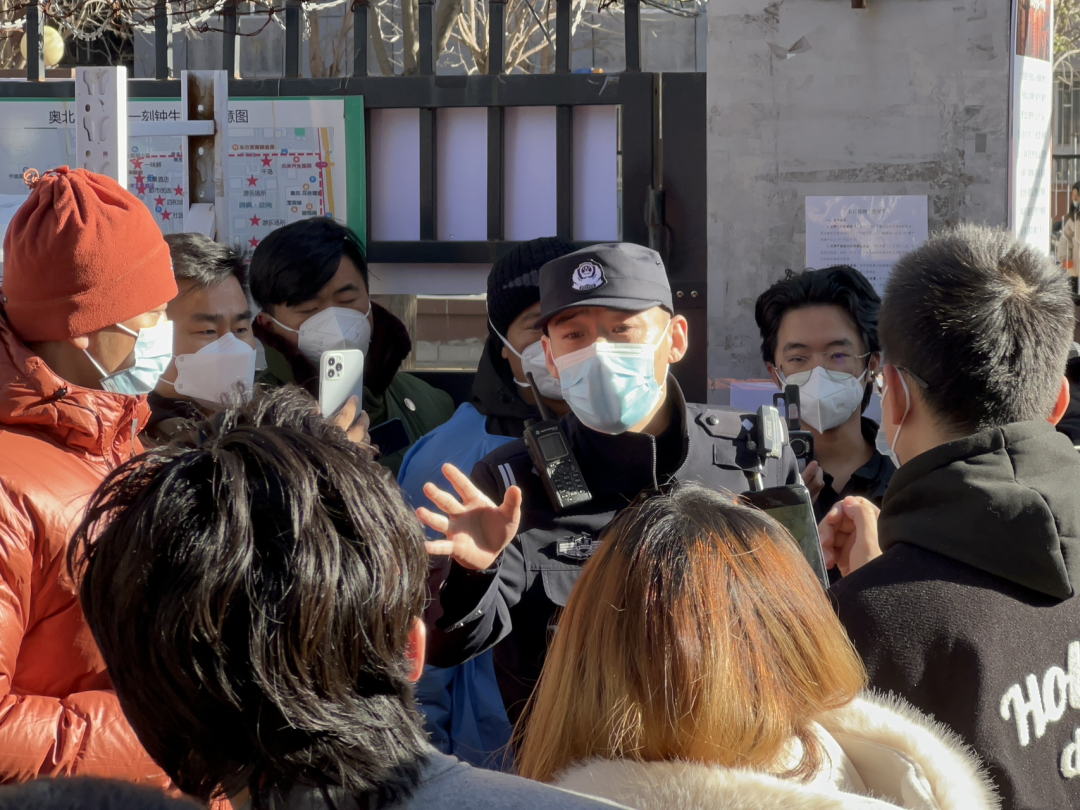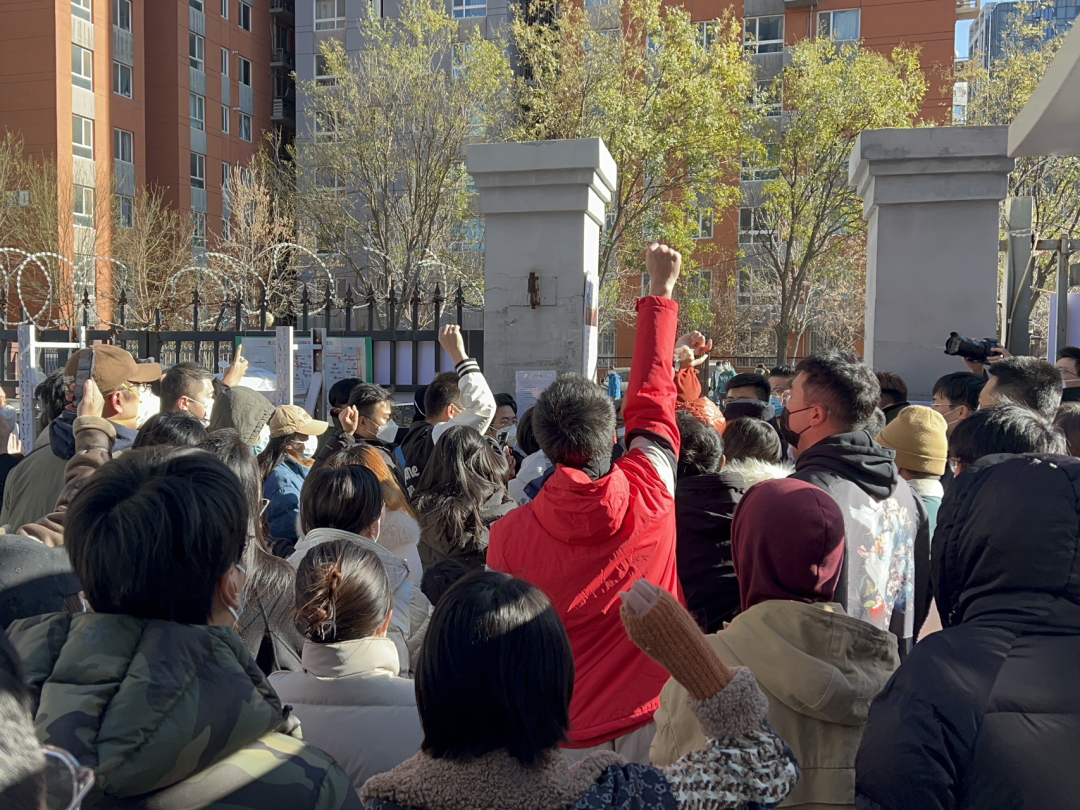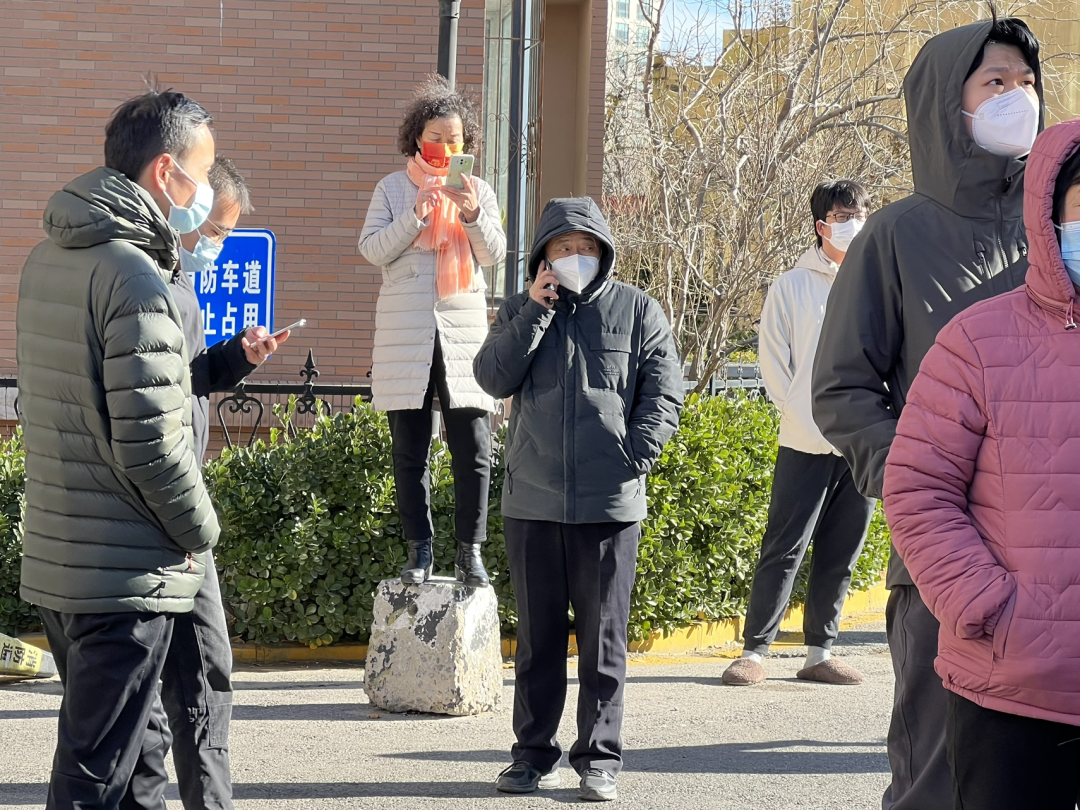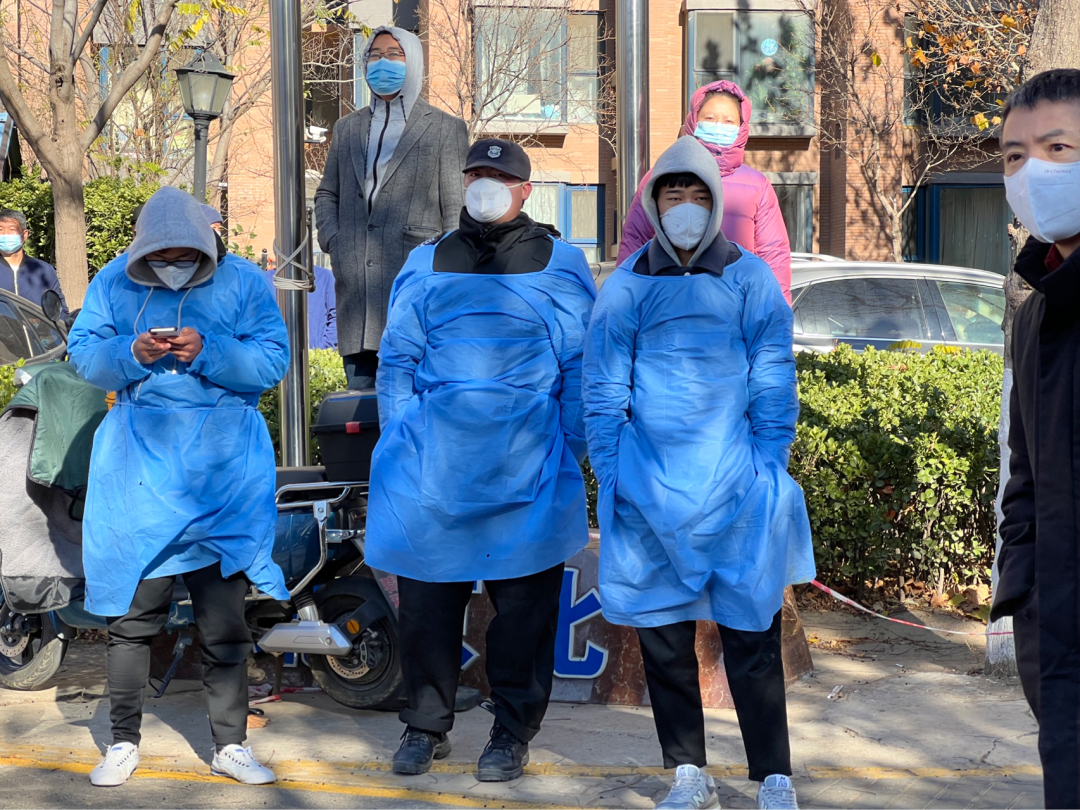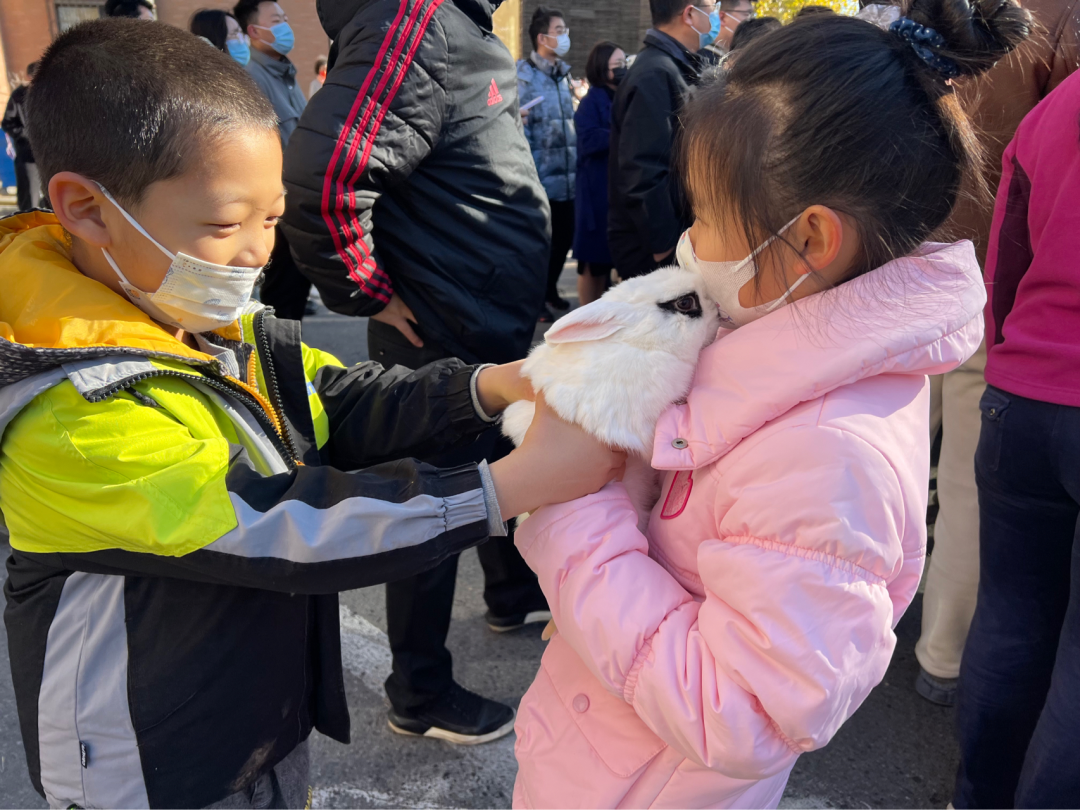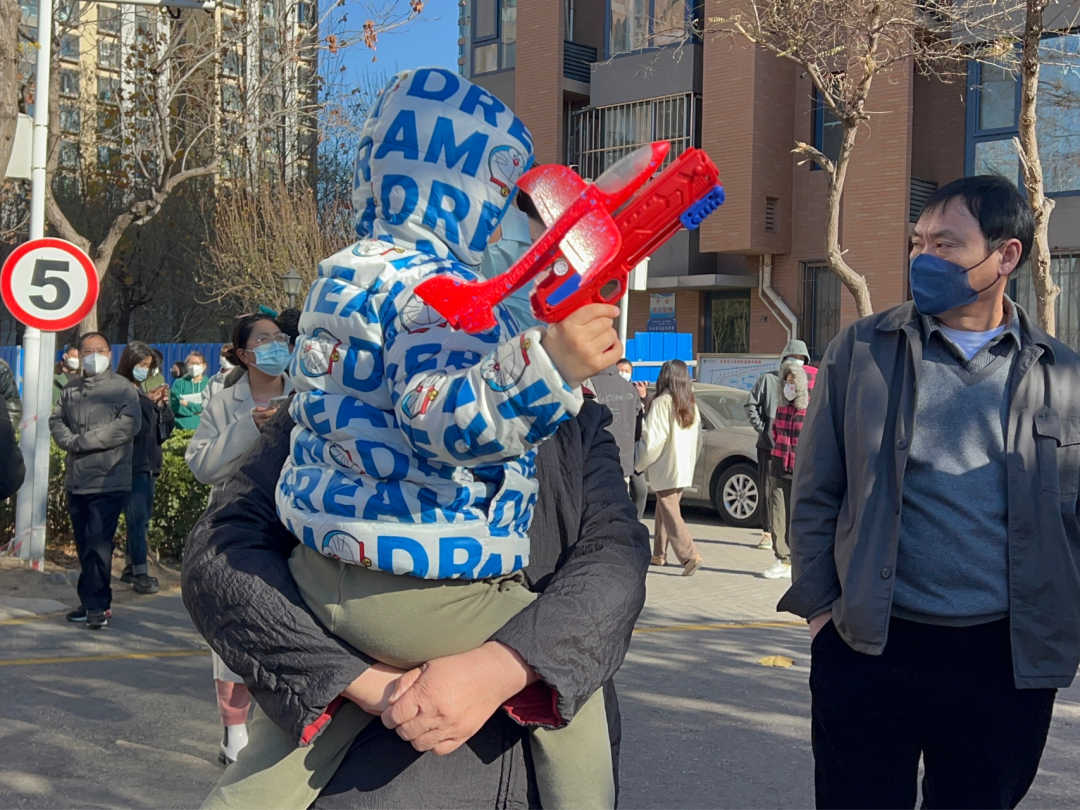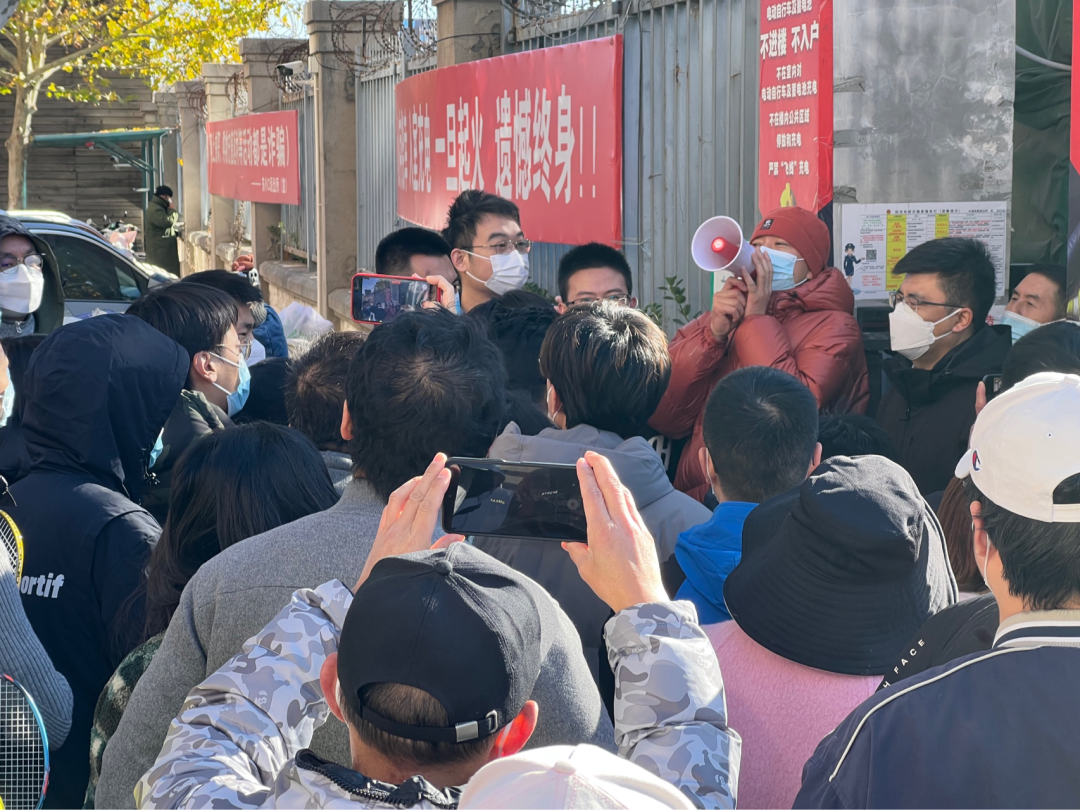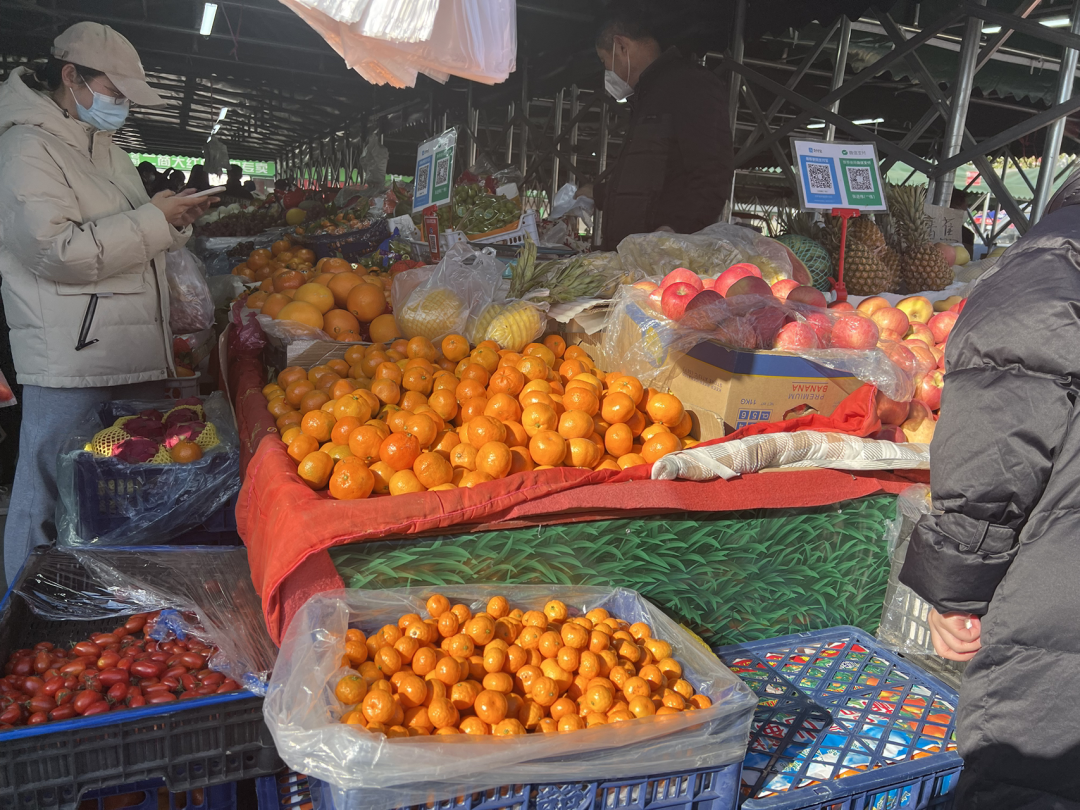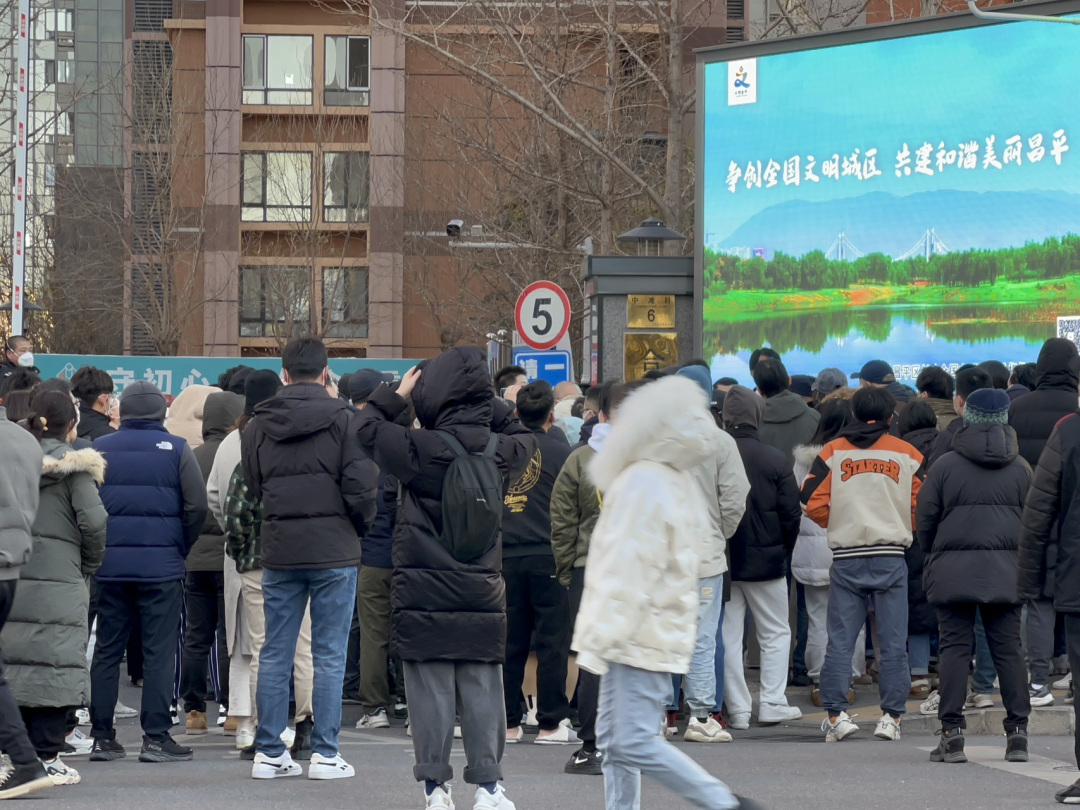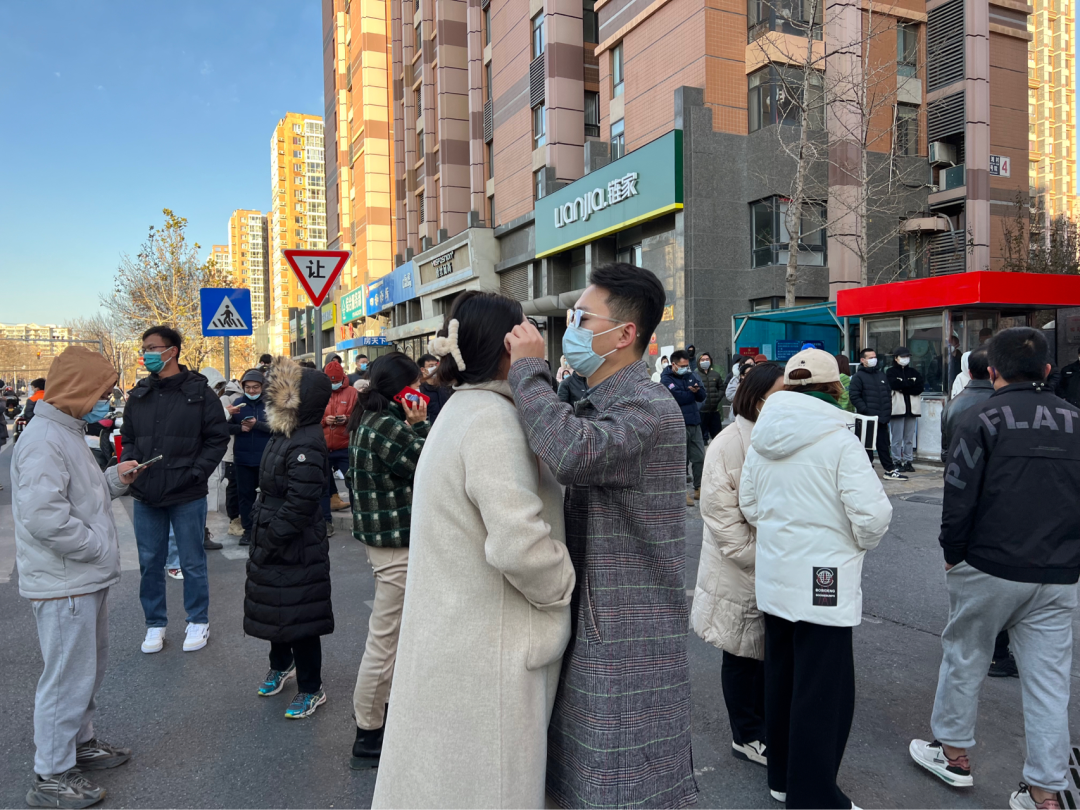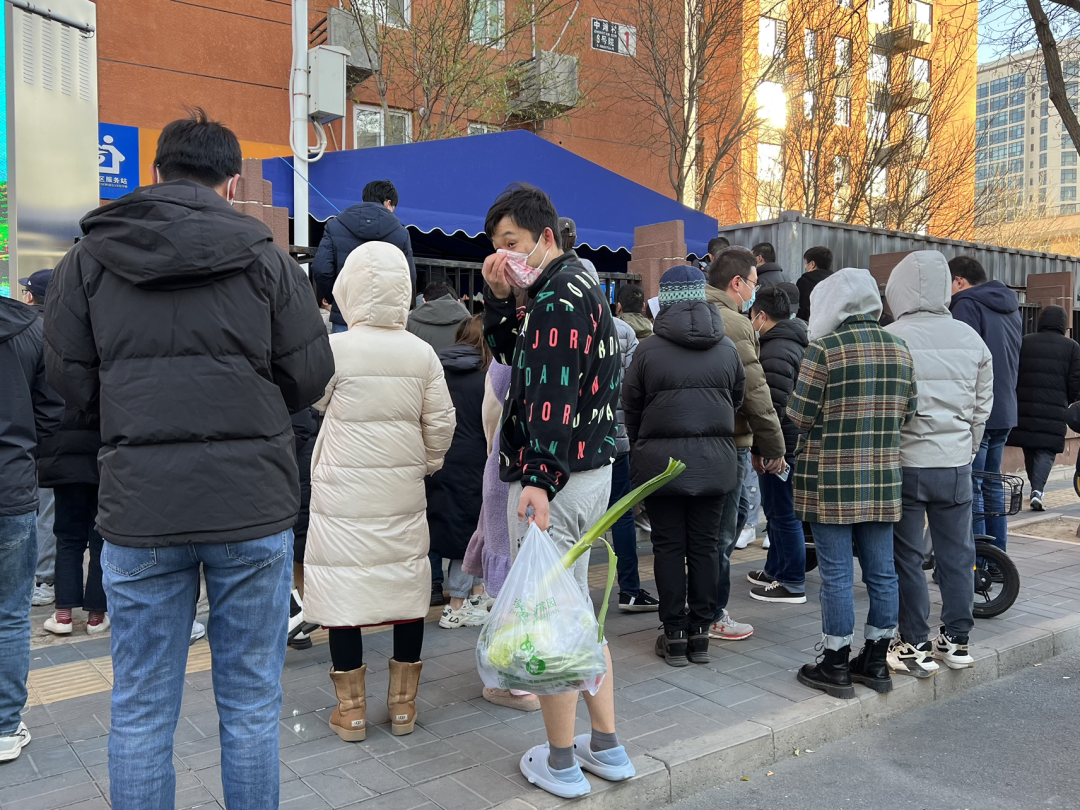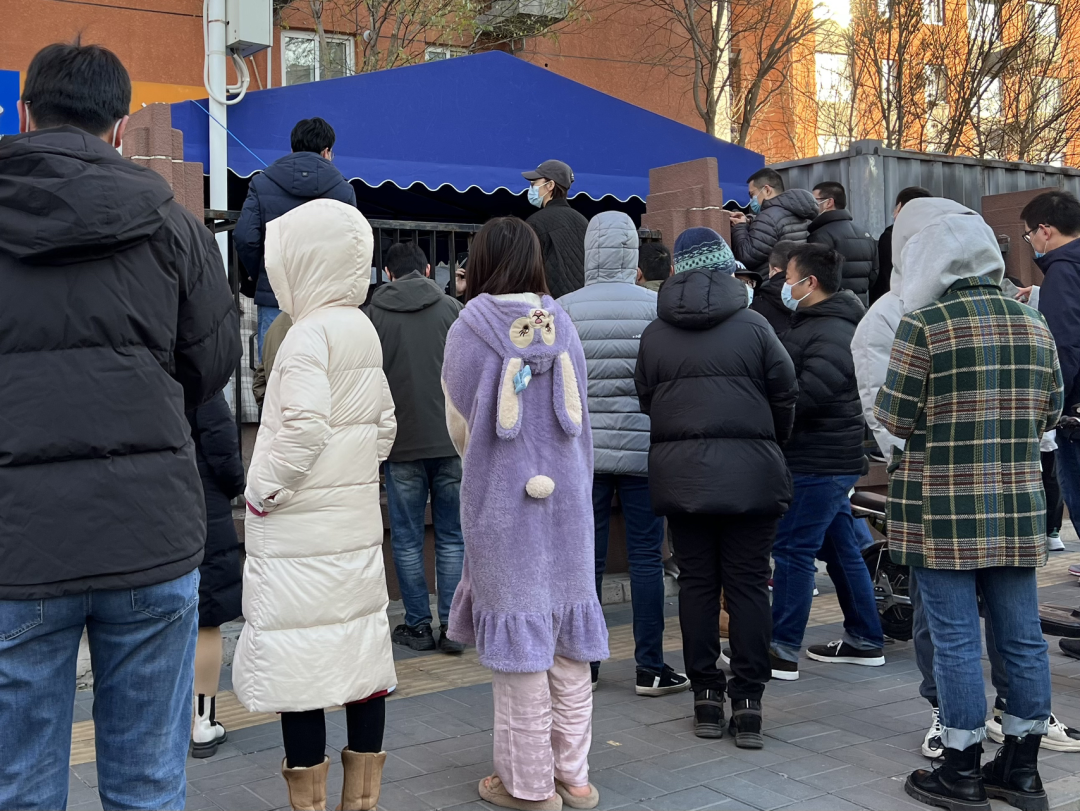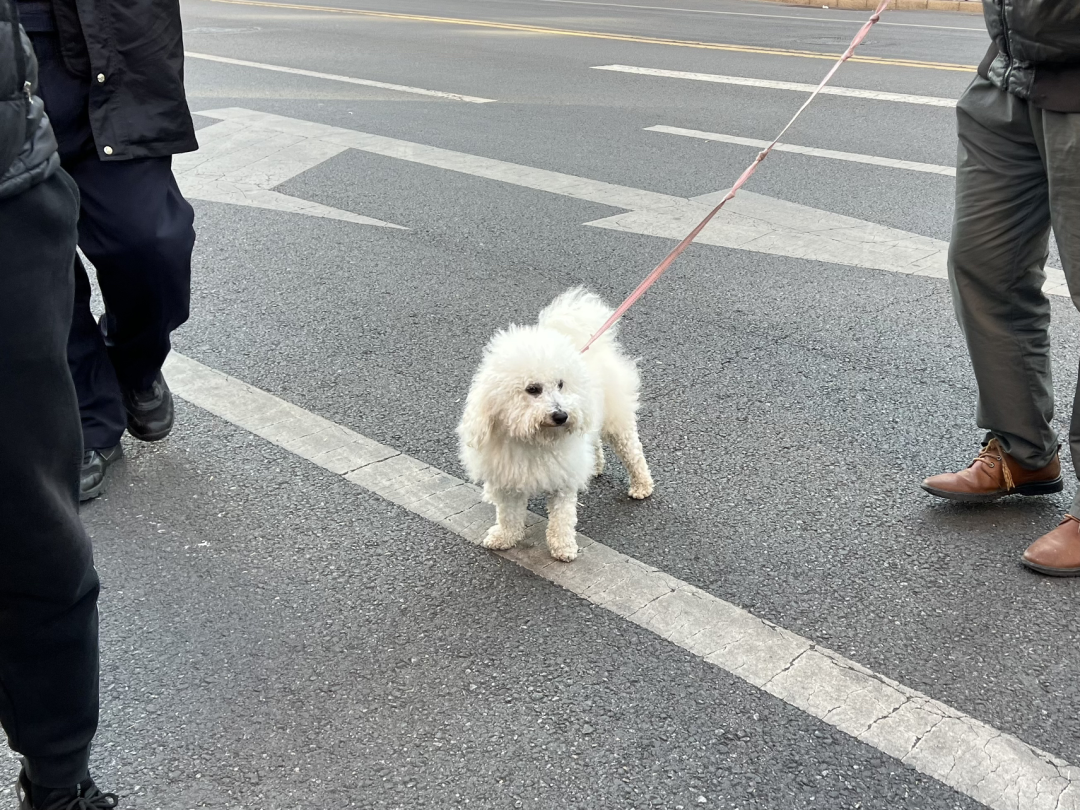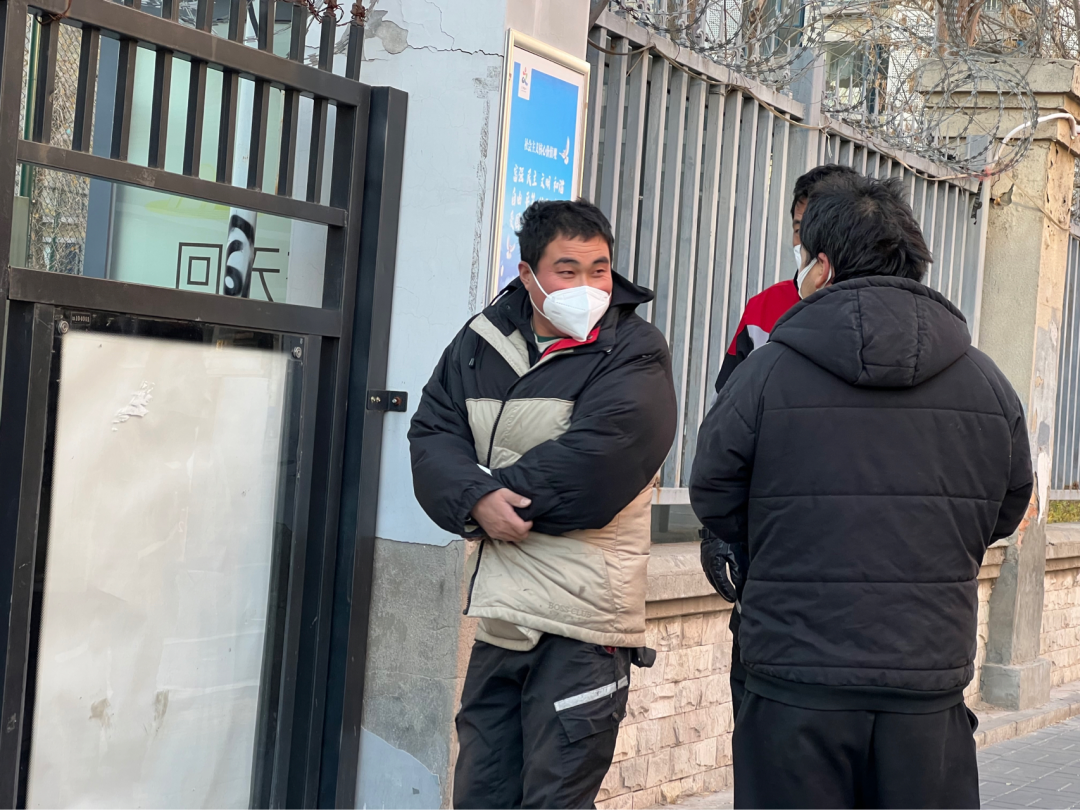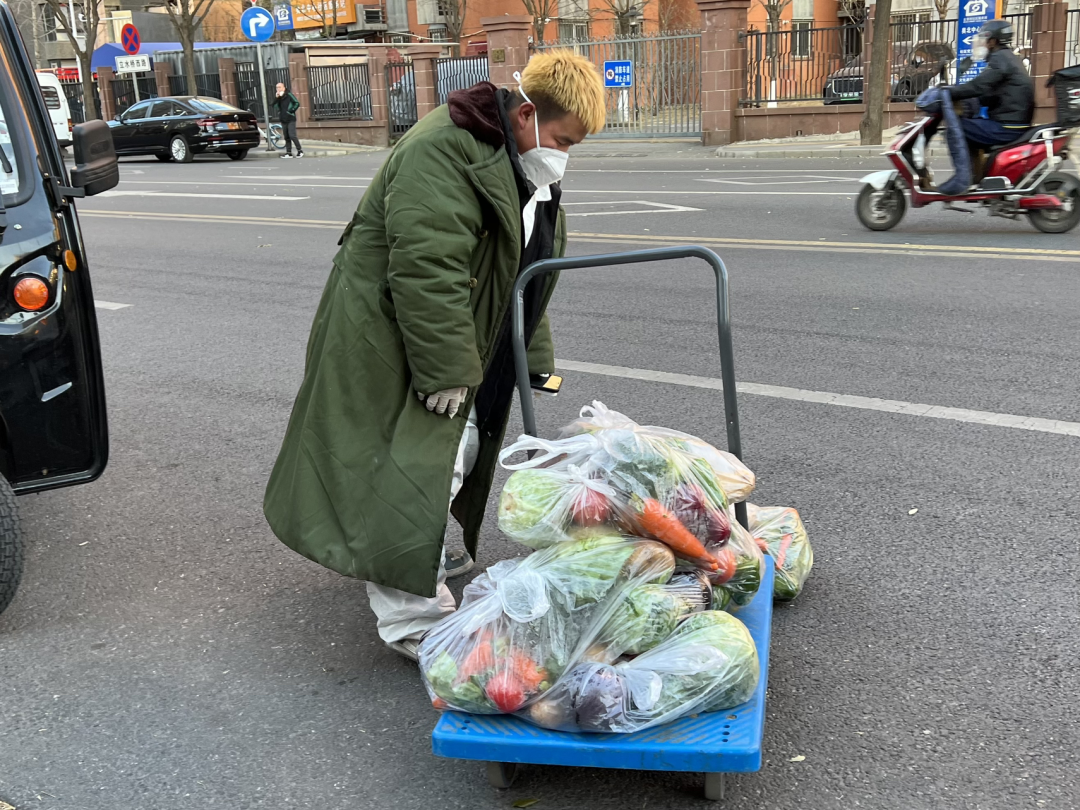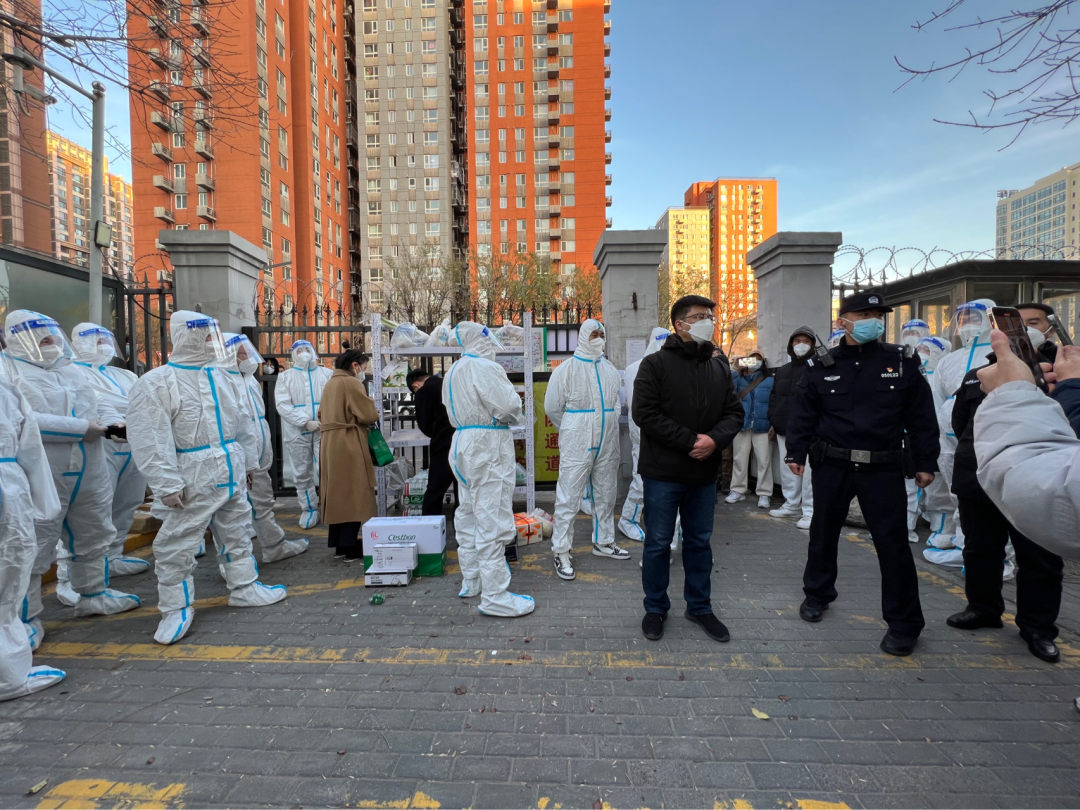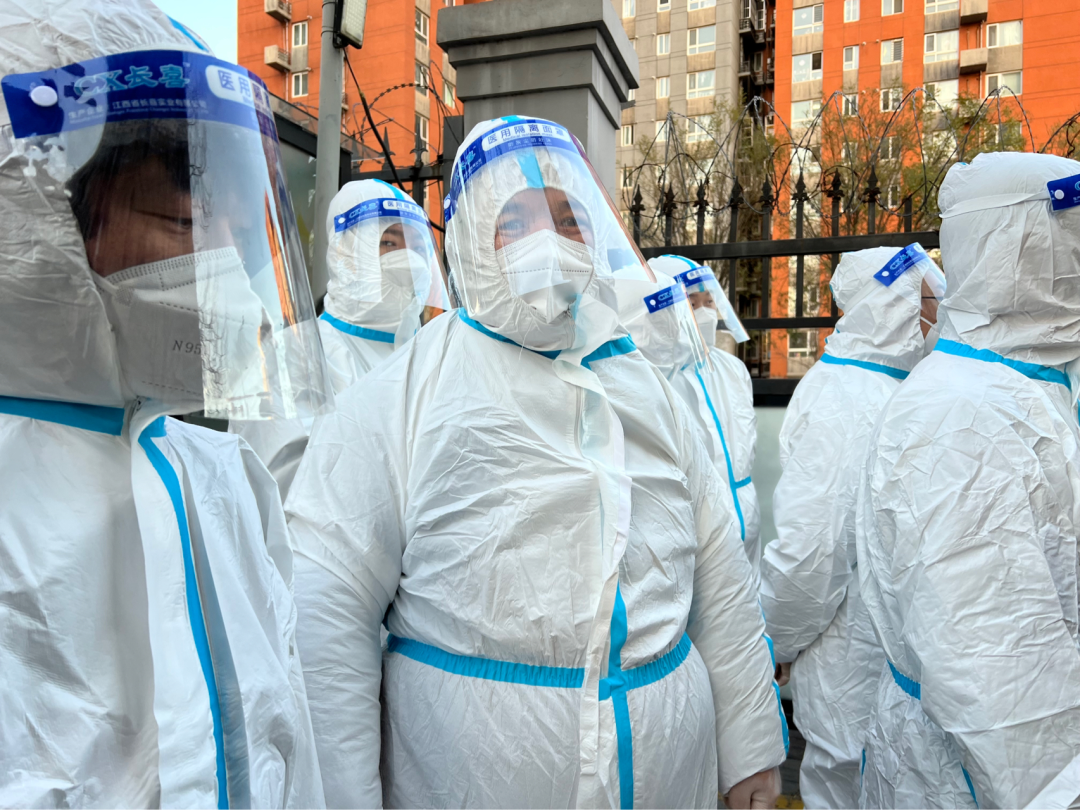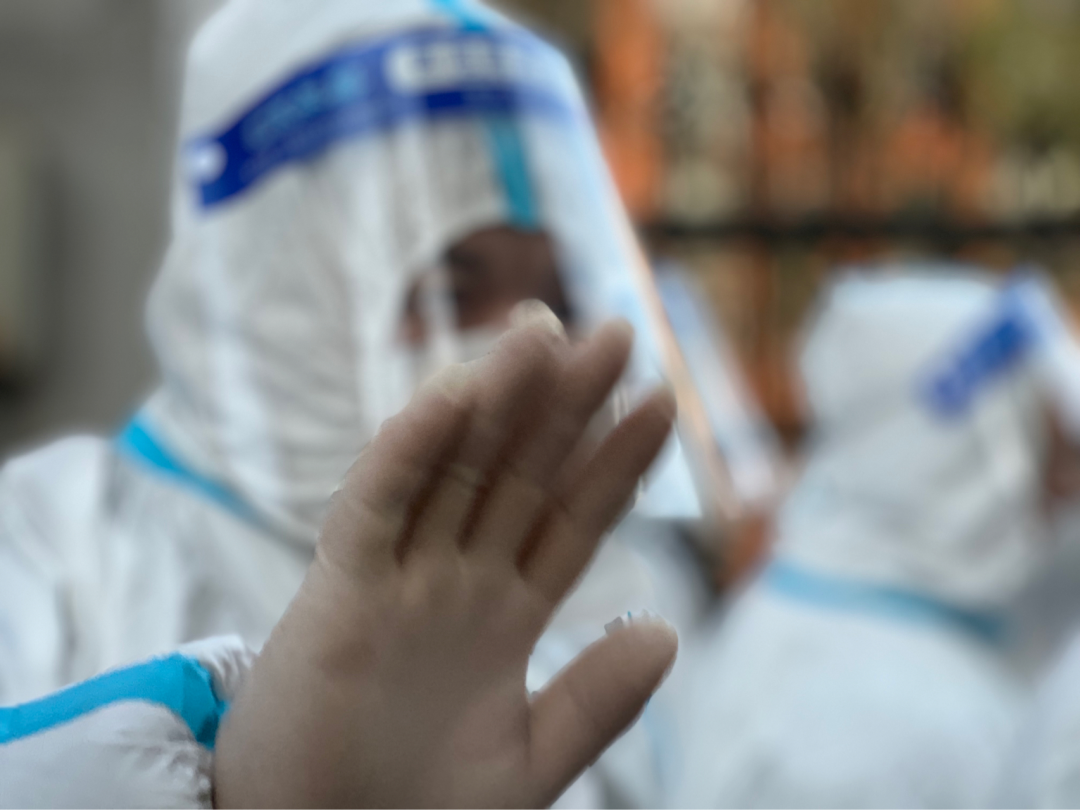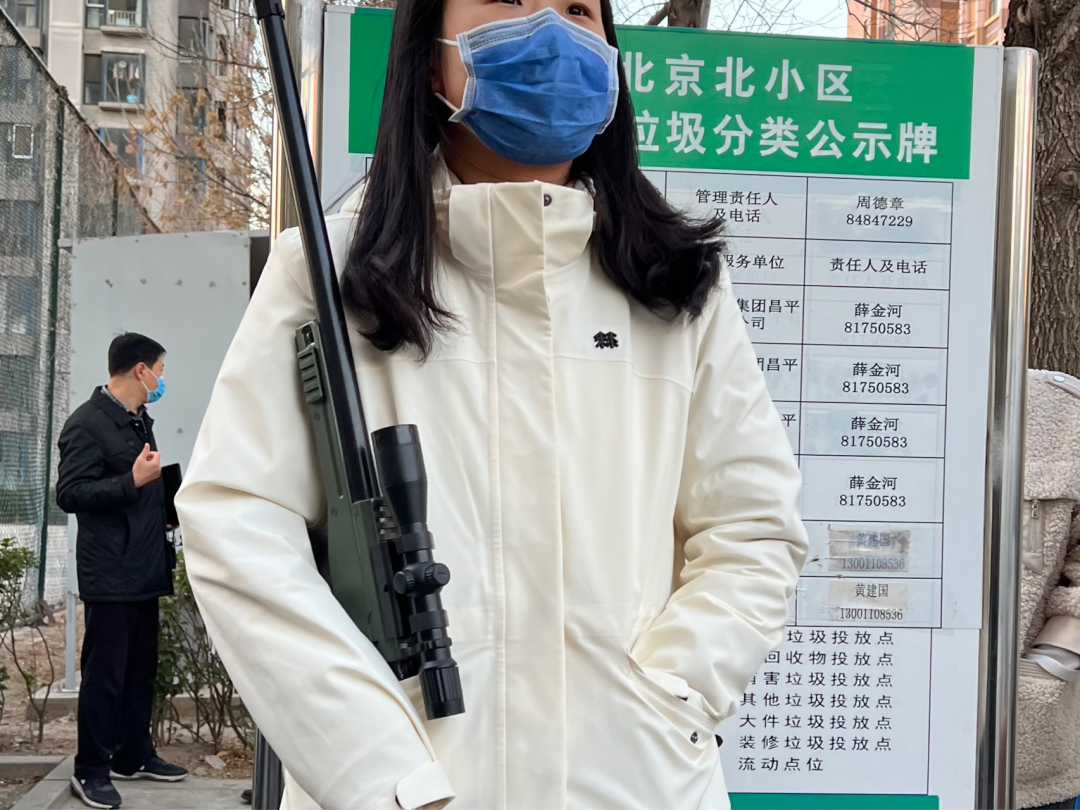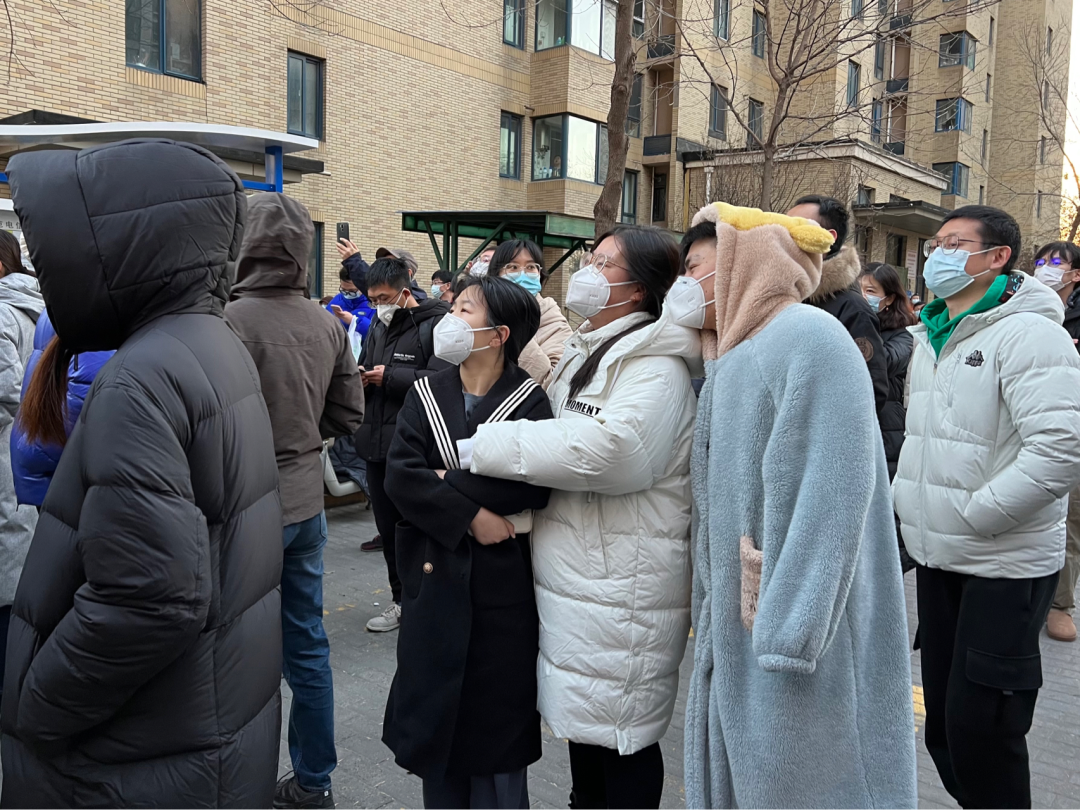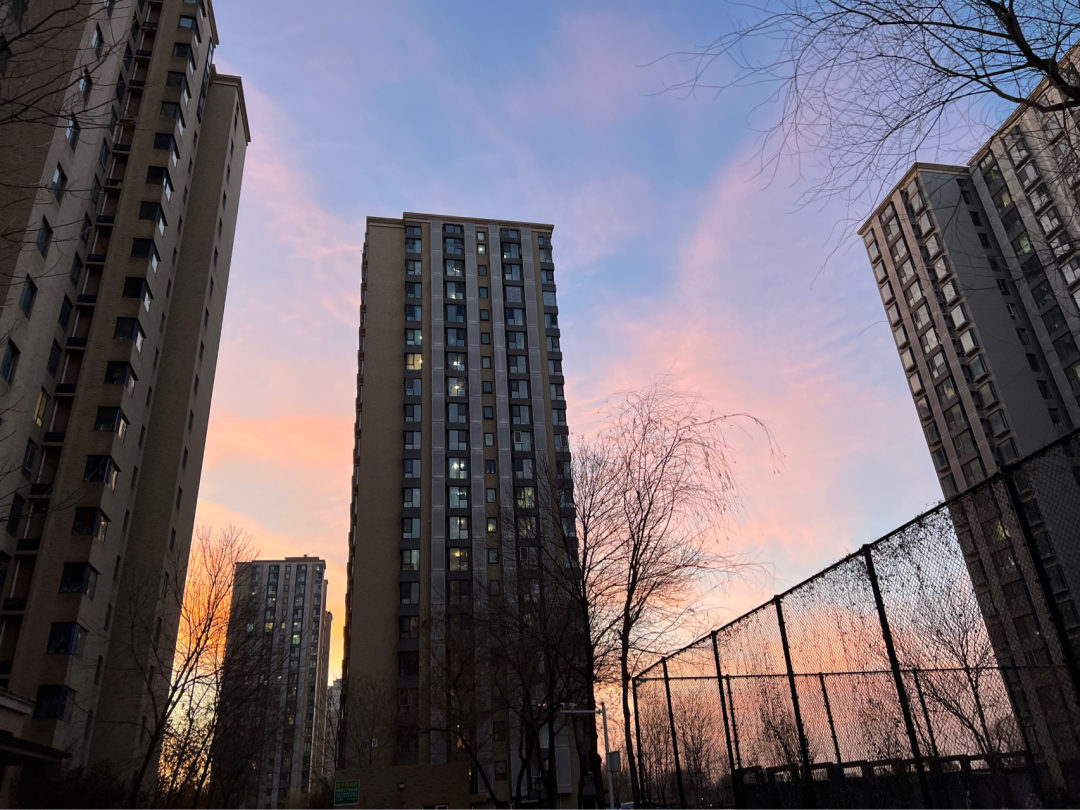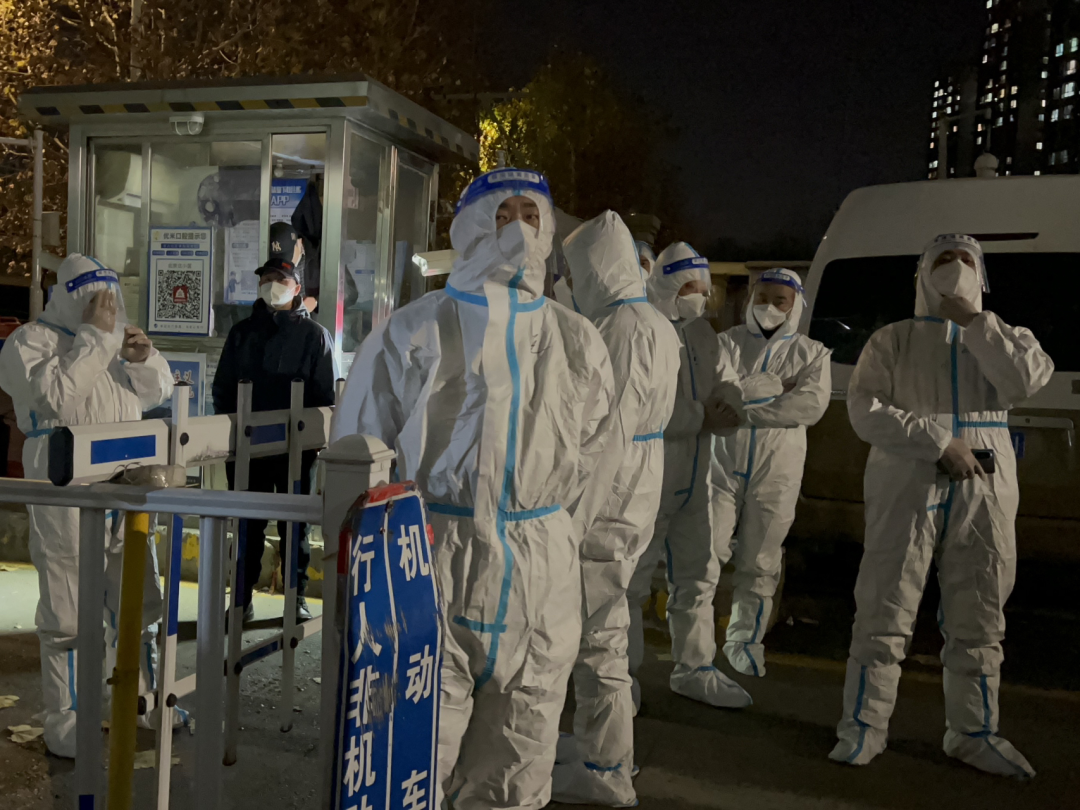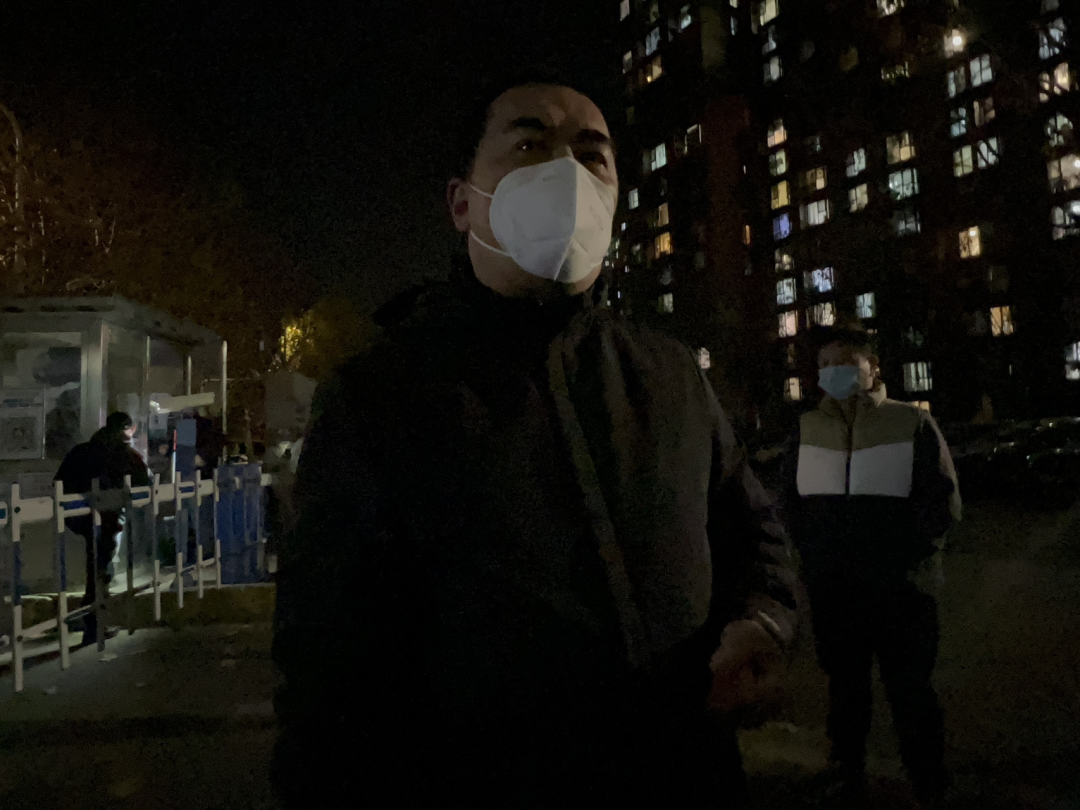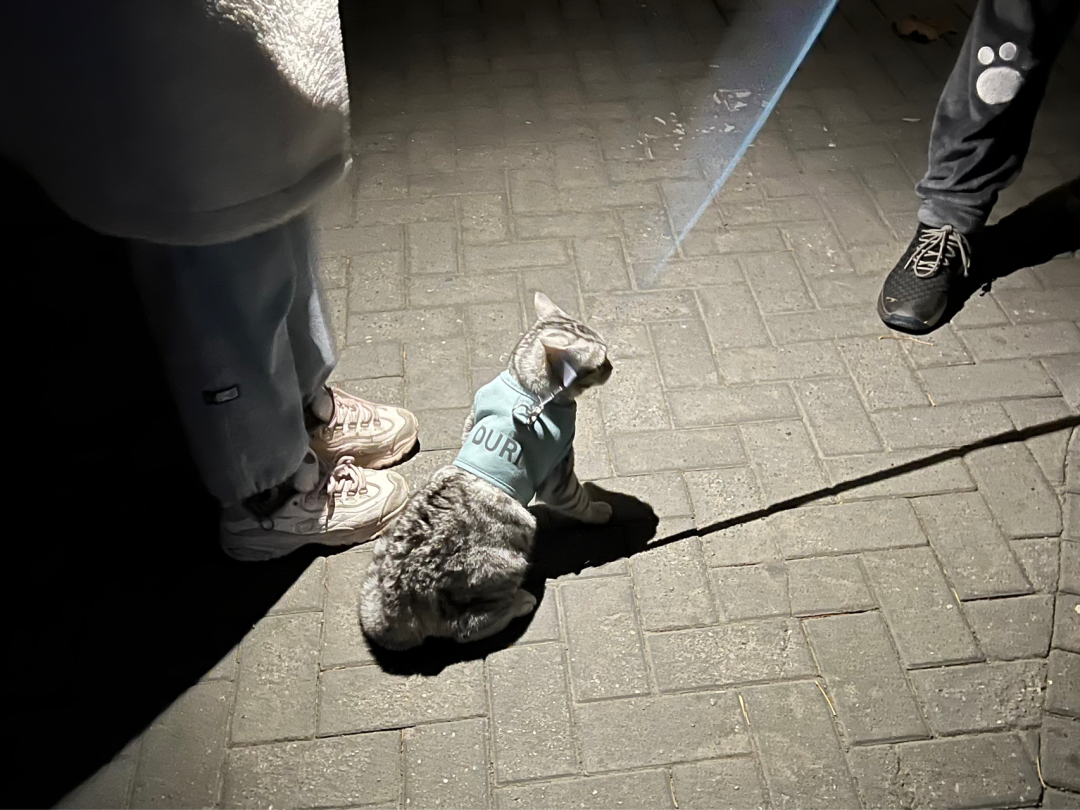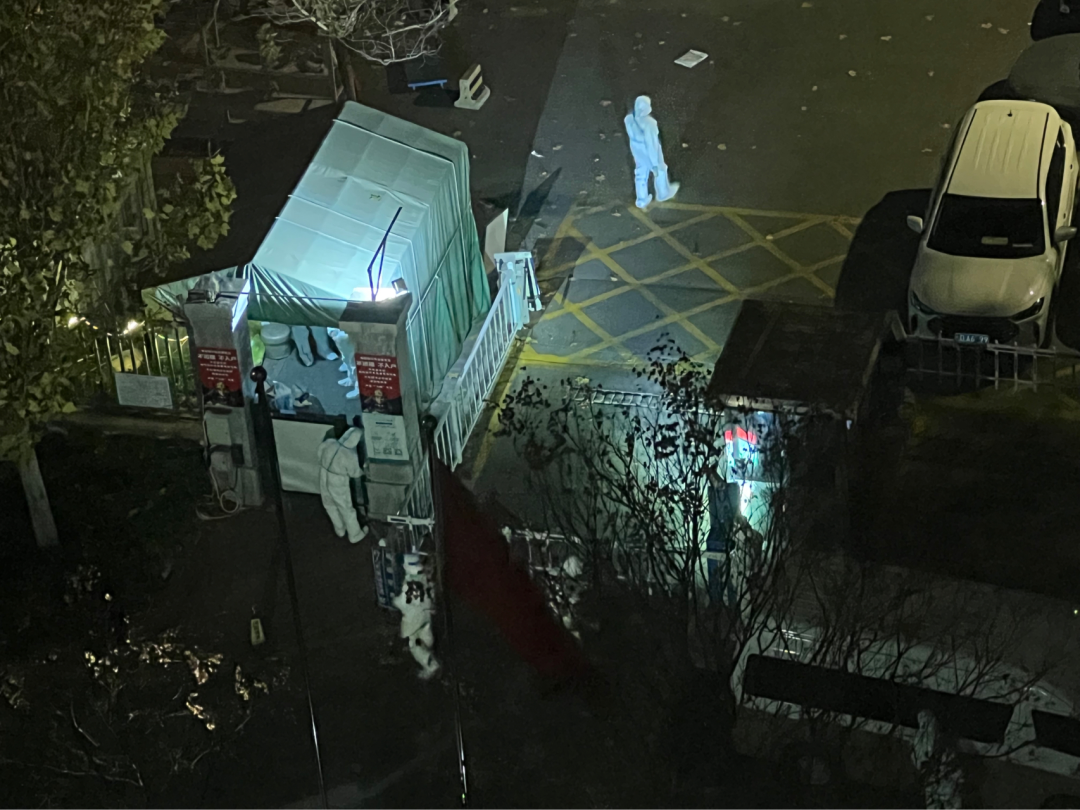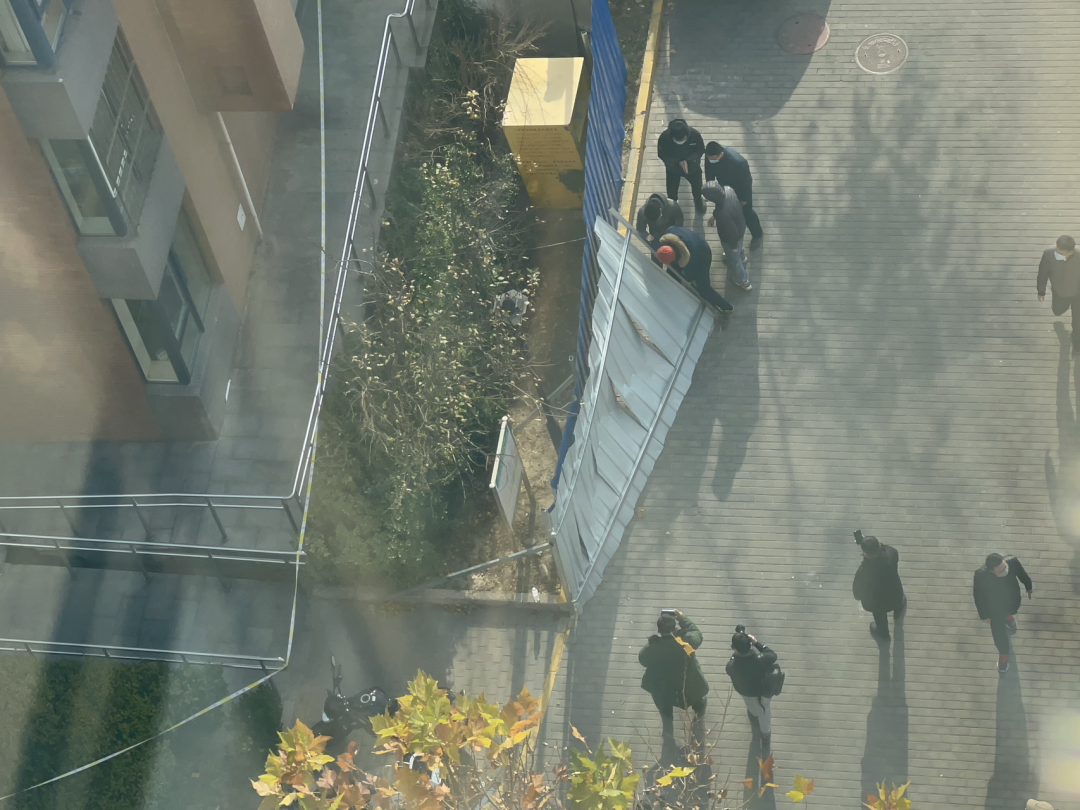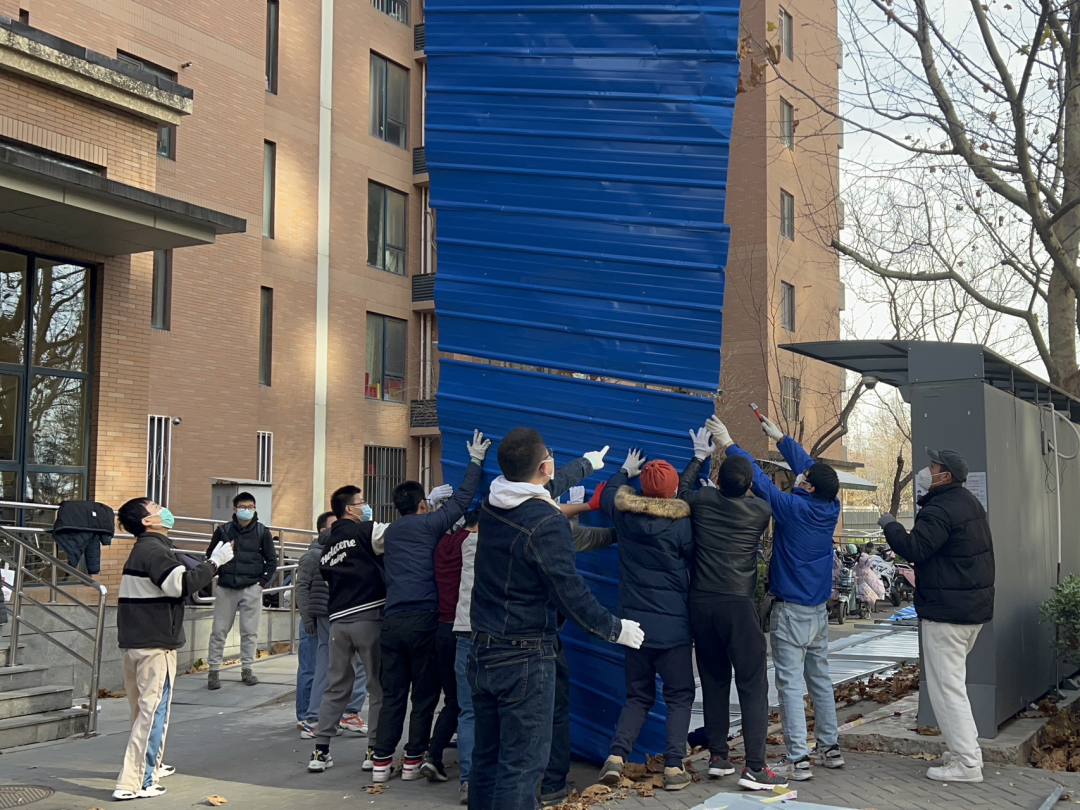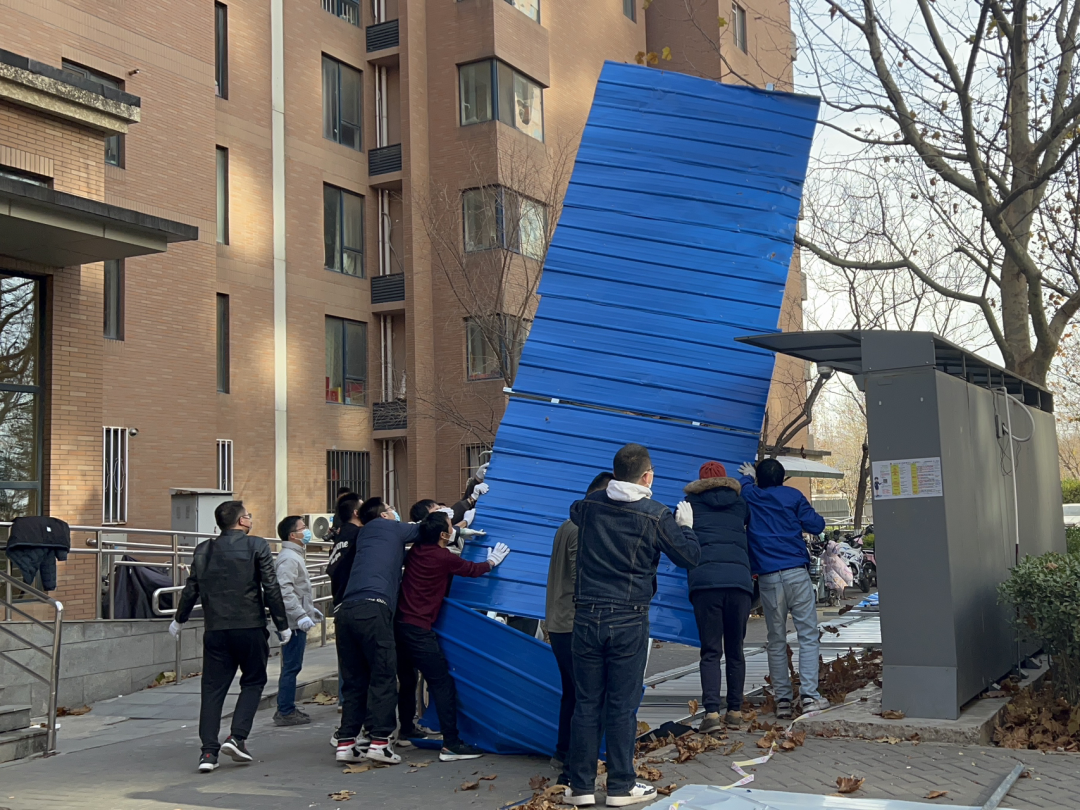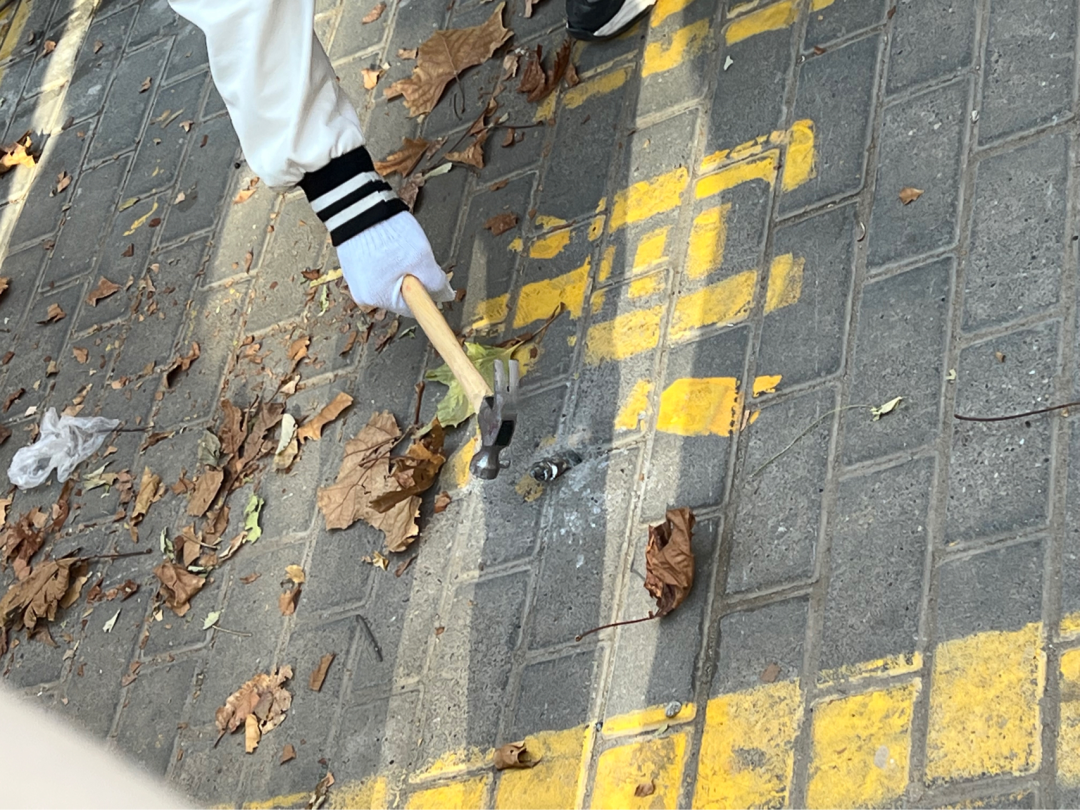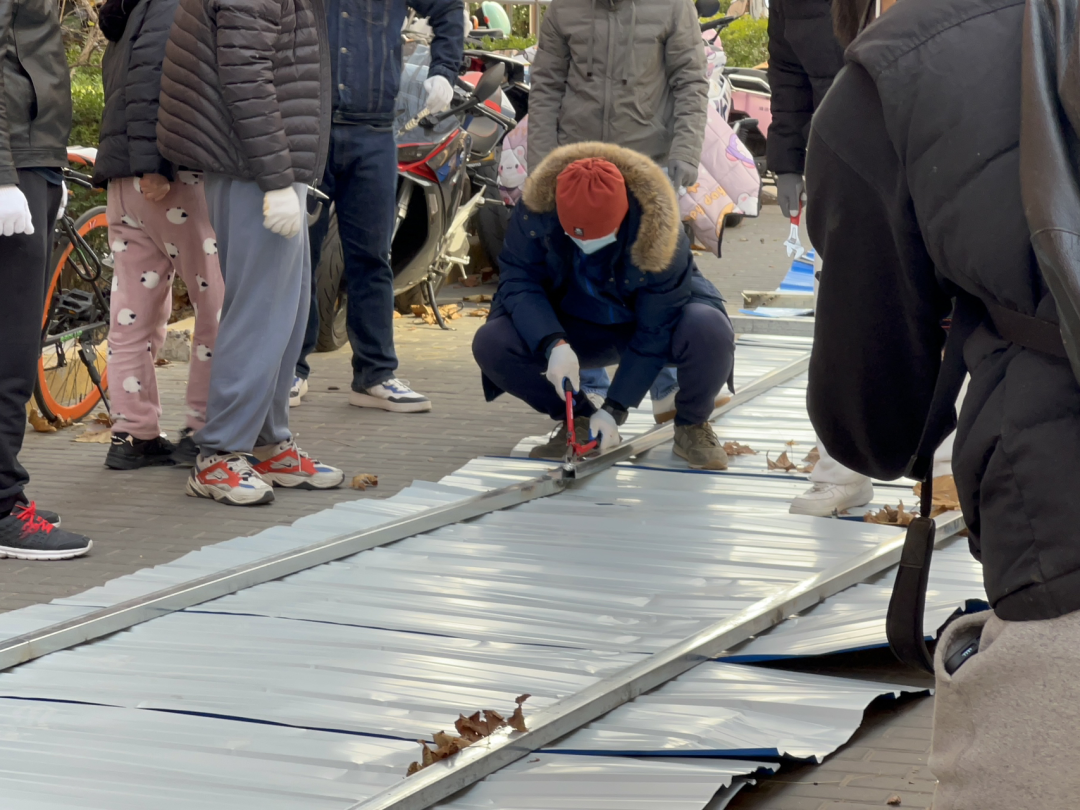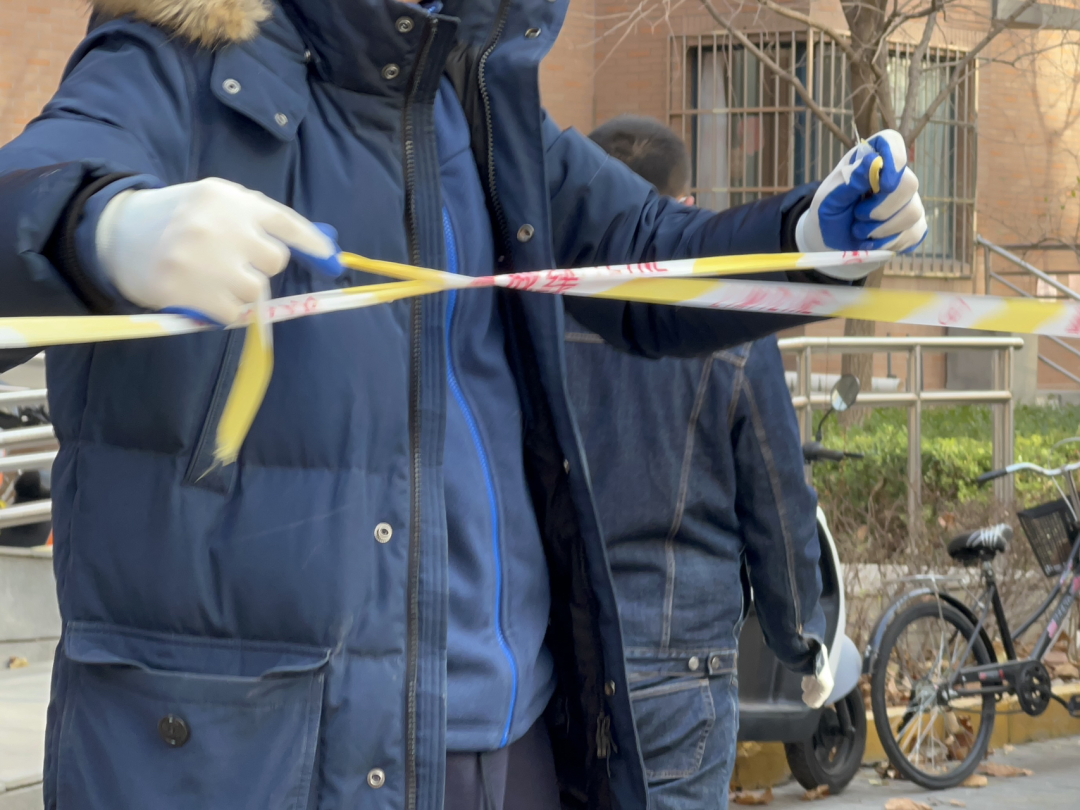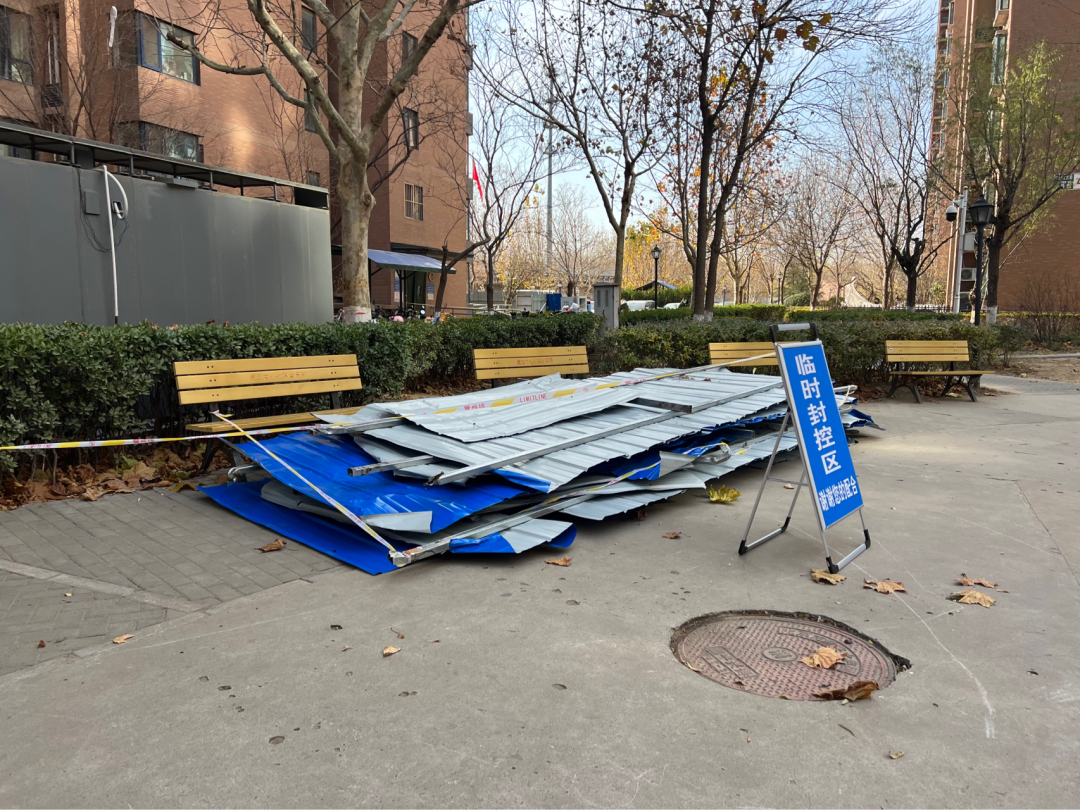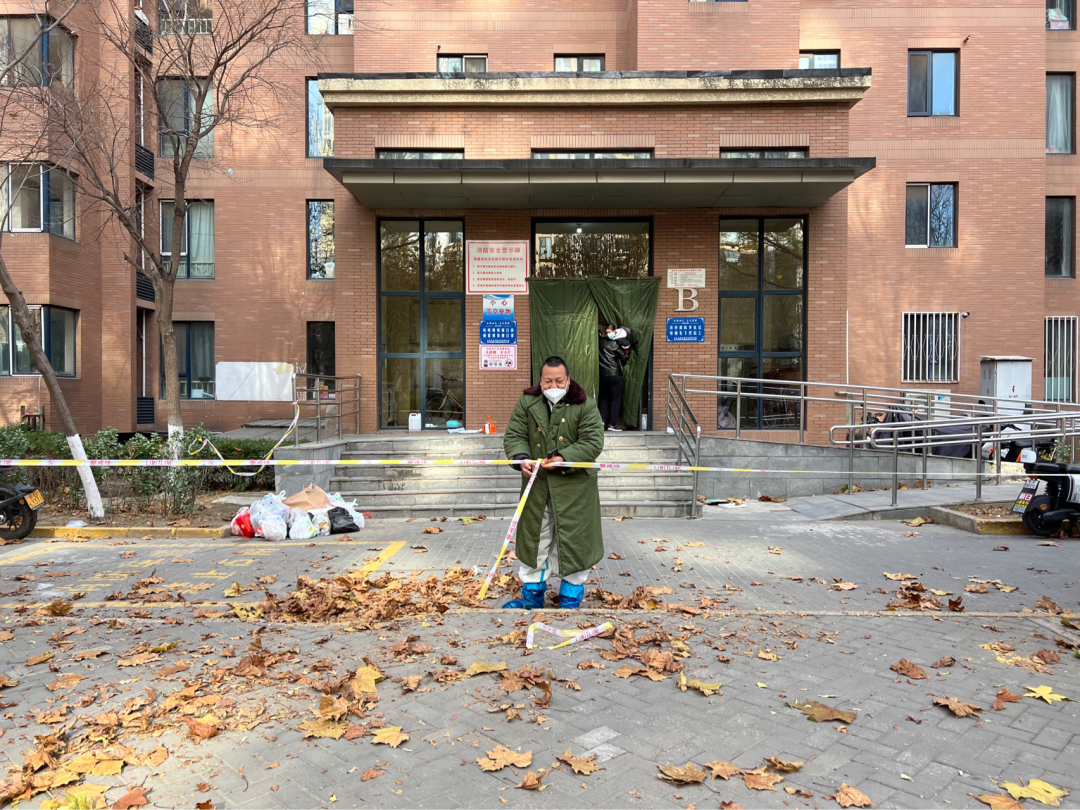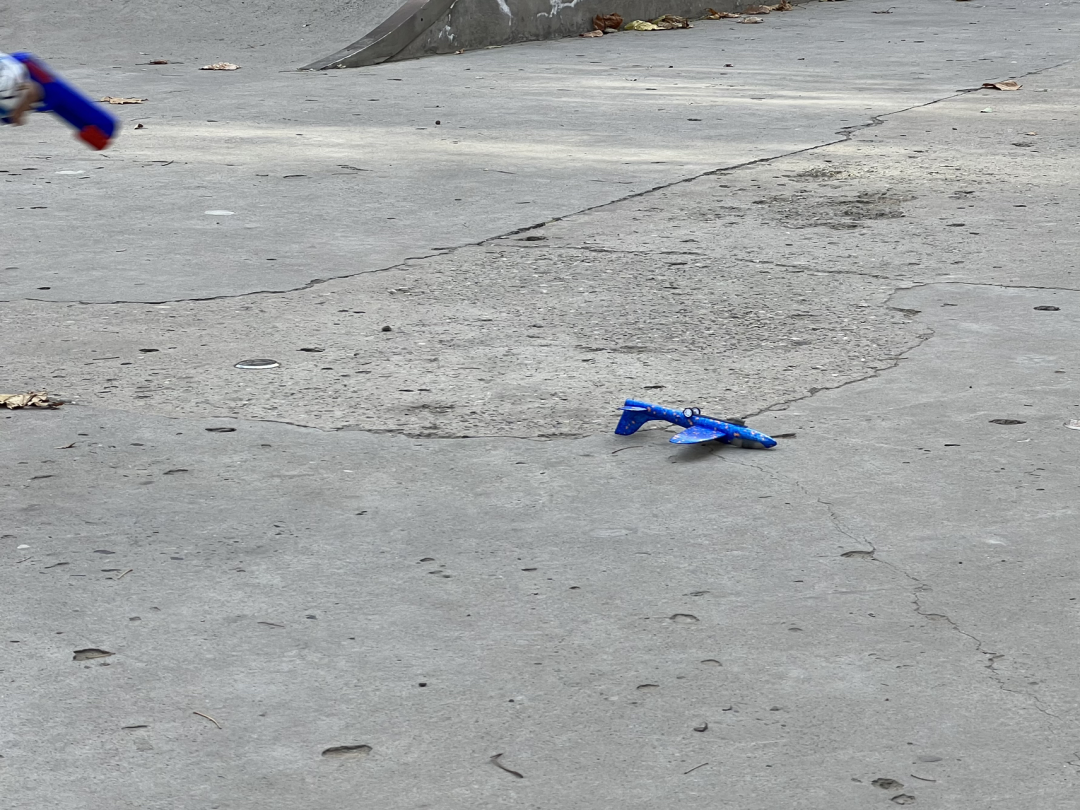In tandem with nationwide anti-lockdown protests touched off by a deadly fire in Urumqi, Xinjiang, residents in some large housing complexes in Beijing and other cities have organized successfully to put an end to their neighborhood lockdowns. They have prevailed by employing a variety of methods: peaceful demonstrations, legal arguments, negotiations with police and community officials, collective flouting of COVID restrictions, and the dismantling of locks, checkpoints, testing kiosks, sheet-metal fences, and other barriers.
Caijing Eleven, a general finance column founded by eleven journalists from Caijing magazine, even published a detailed primer titled, “How to Use Legal Weapons to Put an End to Illegal Lockdowns.” The primer reminds readers that only county- or higher-level-governments have the right to institute lockdowns, and therefore local closures ordered by neighborhood or village committees are illegal. The primer advises residents that they can and should ask for proof of a written order from a higher-level authority authorizing the lockdown. Residents can also complain about lockdowns or excessive pandemic-prevention measures by calling the police (110), the government service hotline (12345), or contacting government bureaus in charge of public health, transportation, disease prevention, or fire prevention.
The photo essay below, translated by CDT editors, documents two days during which residents of a housing complex in Changping, a sprawling district in north and northwest Beijing, fought to end the lockdown of their community. It provides some insights into the ways that residents are banding together to resist what they consider to be draconian lockdowns. Still uncensored, the piece was originally posted to the WeChat account 香蕉你个芭乐 (“Xiangjiao ni ge bale,” a comedic swear-word that translates roughly as “Banana Your Guava“).
The housing complex notified us that because some people in one of the buildings had tested positive for COVID-19, the entire complex would have to be sealed off.
At first, the whole building was surrounded by sheet-metal fencing. Even the emergency fire exit was blocked off.
In an act of God, the heavy winds—unable to stand the unsightly fence—peeled apart the blue sheet-metal.
Then at last, some brave individuals stood up, and were joined by a steady stream of people from other buildings.
One guy even brought a digital camera and a ladder. I’d be curious to know how his photos turned out.
It was a cold day, so everyone huddled together for warmth. Luckily, the sun was out.
Conversing with a police officer.
People started shouting “Lift the lockdown!” Residents of the adjacent housing complex soon joined in, shouting slogans and cheering us on.
Many people raised their “weapons” [i.e. their cell phones] to record the speeches being made.
Some people even came down in their pajamas.
This older “auntie,” wearing a red face mask, joined in as well.
Pandemic-prevention volunteers watched from a distance.
I like these little kids playing with a rabbit on the sidelines. So cute.
I wonder what the rabbit thinks about our fight?
Here’s another cute kid, playing with an airplane-shaped toy gun.
The most important weapon in this fight is the bullhorn.
Having won a temporary victory, everyone left the housing complex to go to the fruit and vegetable market.
Walking along the street, feeling like we’ve been released from prison, it appears that the world has not stopped in our absence.
After eating lunch, people emerged again in the afternoon to offer their support to the residents of the housing complex across the street.

Billboard reads: “Striving to create a “National Civilized City.” Building a harmonious and beautiful Changping.”
I liked these relaxed moments in the midst of the proceedings. They made it seem as if people had simply come out to do some window-shopping.
A young guy on his way back from buying vegetables joined us.
Everyone gathered outside the neighborhood committee office, awaiting a written document acknowledging that the lockdown had been lifted.
A passing dog wanted to see what all the fuss was about.
They told the deliveryman that people were free to come and go from the complex, but he was still afraid to enter.
People in the community started going outside to walk their dogs.
Local officials distributed the remaining emergency food care packages. Note that they only got around to delivering them after we fought back.
The director of the sub-district office went back on his word: he showed up with a PPE-clad security team and started making preparations to lock us down again. Everyone said they were like barbarians at the gate.
I thought this guy looked very silly in his PPE, so I struck up a conversation with him and asked him why he was here. He said he worked for a security company, and had come here naively assuming that he’d be doing something altruistic. The young man next to him told me that his neighborhood had also just been locked down, and now he wasn’t sure where he was going to sleep that night. They all promised that they wouldn’t raise a finger against us. Two young women started talking to them, showed them that “weakness” video, and told them that they shouldn’t do the bidding of people like that. [This refers to a now-censored viral video from Nov. 20, in which sub-district neighborhood committee members from Tiantongyuan, a vast suburb near this one, are heard talking about how to intimidate local residents during lockdown—one says of a certain local man, “His weakness is his son.”]
After I’d taken too many photos, the guy said, “Don’t shoot me. Shoot him.” (Referring to the director of the sub-district office.)
A young woman totes a realistic-looking toy rifle.
A mother has come downstairs with her two children.
Glancing behind me, away from the crowd, everything looked so lovely and innocent. Our cold northern weather isn’t very conducive to this sort of protest. Seeing that the situation was at a standstill, I decided to go home for some dinner.
After dinner, I came back down again. At one of the gates where there wasn’t much of a crowd gathered, it was no longer possible to enter or exit freely.
At this gate, guards had begun stopping people from going through, but at another gate where there was a bigger crowd, you could still pass through freely.
I had a long debate with this guy from the subdistrict office. As a former military man, he didn’t take well to being interrupted when he was trying to talk. I spoke to him about the 20 new government guidelines [for easing COVID controls], the nine prohibitions [on excessive COVID measures], and the importance of written lockdown orders [without which local officials are technically not allowed to impose a community lockdown]. He told me that he knew, and that he understood, but that it wasn’t within his power to lift our lockdown: he was just carrying out the orders of his bosses at the subdistrict office.
I was never going to break our deadlock, and it was way too cold, so I decided to go home. Along the way, I was pleasantly distracted by some neighbors out walking their cat.
At the other entrance, residents carried on the fight and emerged victorious, managing to drive away all of the security personnel. The next day, we were able to freely come and go through both gates.
Having achieved our first goal, everyone decided to pitch in and tear down the metal fencing that had been blocking our buildings.
With the policeman’s tacit acquiescence, everyone started dismantling the fencing in earnest. By the time I showed up, they had torn down most of it.
Just like tearing down a wall.
Fearing that passers-by might be injured by the metal spikes that had anchored the fencing to the ground, someone carefully flattened them.
Who’d have expected that this pair of pliers—bought back in April, in response to the cries heard during that lockdown—would come in so handy today?
“Securing the scene” by tying together two broken ends of yellow and white caution tape.
We all helped move the dismantled fencing to one side so that kids and older folks wouldn’t get hurt on it. When we were done, one guy joked that we could have used some hammers and axes.
We even blocked it off with caution tape, to remind everyone to be careful.

Blue sign: “This area is temporarily blocked off. Thank you for your cooperation.”
Except for this building, which is still locked down, all of the other buildings have been unblocked.
The blue fencing was removed that afternoon. Everyone could come and go freely, and the neighborhood committee issued a notice announcing that the lockdown of our community had been lifted.
And that was how our two-day-long fight concluded.
[Chinese]




